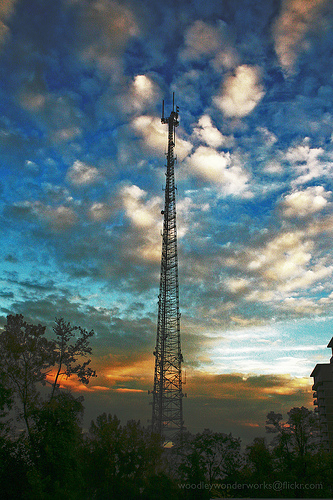By Thomas Yohannan
 The theme of this year’s Consumer Electronics Show (CES) was any content, anywhere, anytime, and on any device. It is CES, so you could expect that every company was showing off their new models from tablets to 3D TVs. This year’s darling was the tablet, with the Motorola Mobility's Xoom and Research In Motion's Playbook garnering the most attention. The best in show went to the Motorola Altrix. With the major national carriers racing to launch 4G devices, including HSPA+, LTE, and, in Sprint's case, WiMAX devices, there continues to be a growing importance of the wireless spectrum in the U.S. economy. Innovation is not only needed for the devices, but for the network on which the devices rely.
The theme of this year’s Consumer Electronics Show (CES) was any content, anywhere, anytime, and on any device. It is CES, so you could expect that every company was showing off their new models from tablets to 3D TVs. This year’s darling was the tablet, with the Motorola Mobility's Xoom and Research In Motion's Playbook garnering the most attention. The best in show went to the Motorola Altrix. With the major national carriers racing to launch 4G devices, including HSPA+, LTE, and, in Sprint's case, WiMAX devices, there continues to be a growing importance of the wireless spectrum in the U.S. economy. Innovation is not only needed for the devices, but for the network on which the devices rely.
The CES Friday conversation between FCC Chairman, Julius Genachowski and the Consumer Electronics Association (CEA) CEO, Gary Shapiro was about the need for a broadband mobile infrastructure. “The consumer electronic industry is going wireless,” said Genachowski, citing a projection that anticipates growth by a factor of 35 in the coming five years for mobile broadband use. For the U.S. to continue to be competitive, Genachowski said he hopes to foster an ecosystem which will house the “world’s best innovation. “
The past few years have seen a massive growth in the popularity of mobile devices, including smartphones, tablets and other connected devices. While these devices are the locomotives of the broadband industry, the rails on which the devices operate must also necessarily expand. As he has said before, Genachowski wants to free up spectrum as well as update spectrum policies. The Chairman thinks the U.S. must not only start moving to make these changes, but that it must move faster than other countries to maintain our technological lead. A primary way in which he hopes to accomplish this is by implementing incentive auctions. Incentive auctions would allow TV broadcasters to sell unused spectrum, which would be used for mobile broadband purposes. However, Congress will need to authorize the FCC to begin such auctions.
There is much to be done, but there has been at least some progress. In March, the agency announced its National Broadband Plan which details what needs to be done to expand broadband access to all Americans. The FCC also voted to open up empty broadcast TV spectrum to help bring about a next-generation wireless broadband technology it’s calling “Super WiFi.” It’s promising to see the FCC’s interest in fostering growth, but entrepreneurs and innovation will ultimately decide how long it will take to get any content, anywhere, anytime, and on any device.

